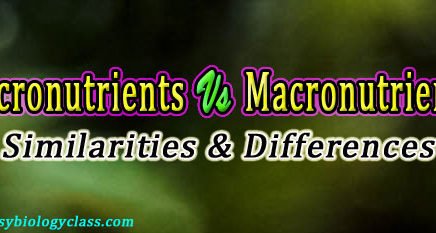
Difference between Micronutrients and Macronutrients – Comparison Table
Micronutrients vs Macronutrients Difference between Micronutrients and Macronutrients: Nutrients are chemical substances required for the proper growth and functioning of all living organisms including plants […]








